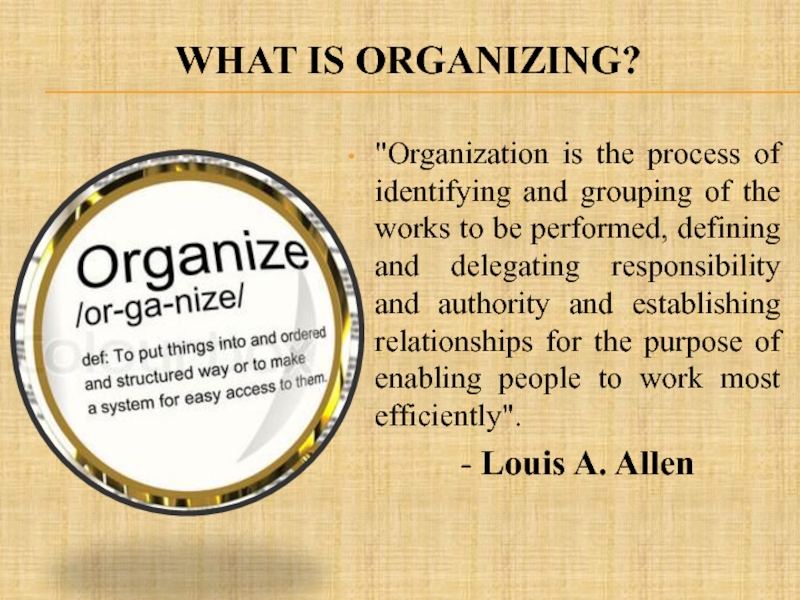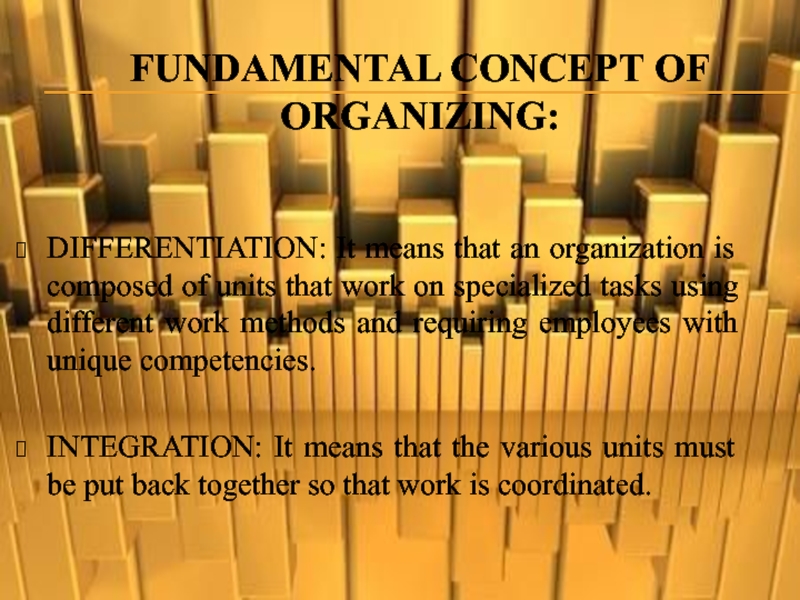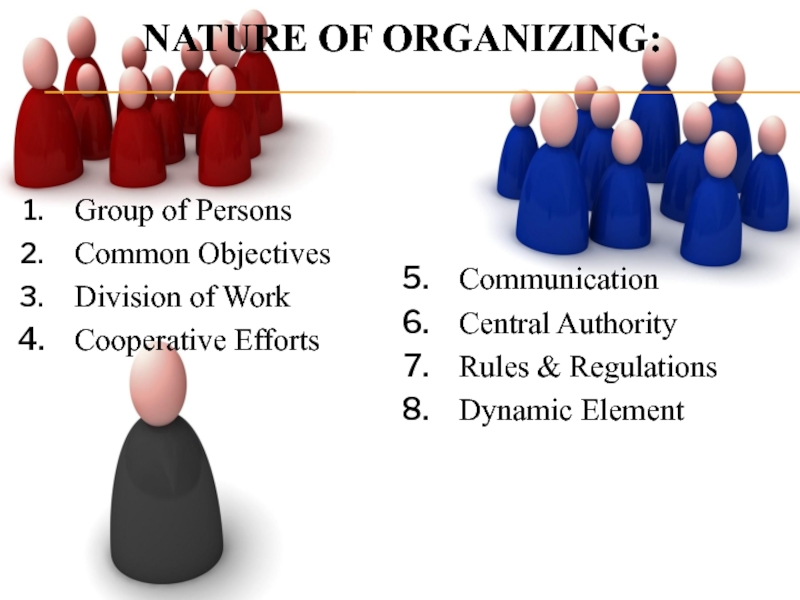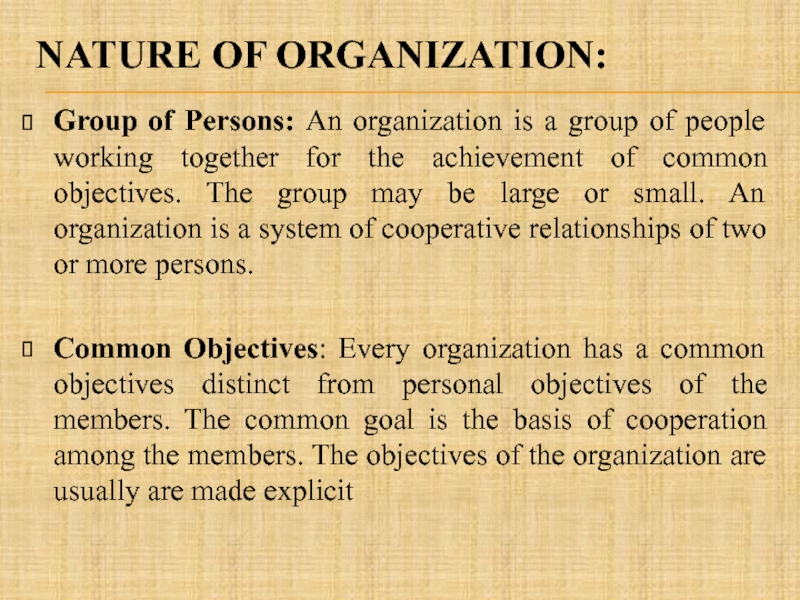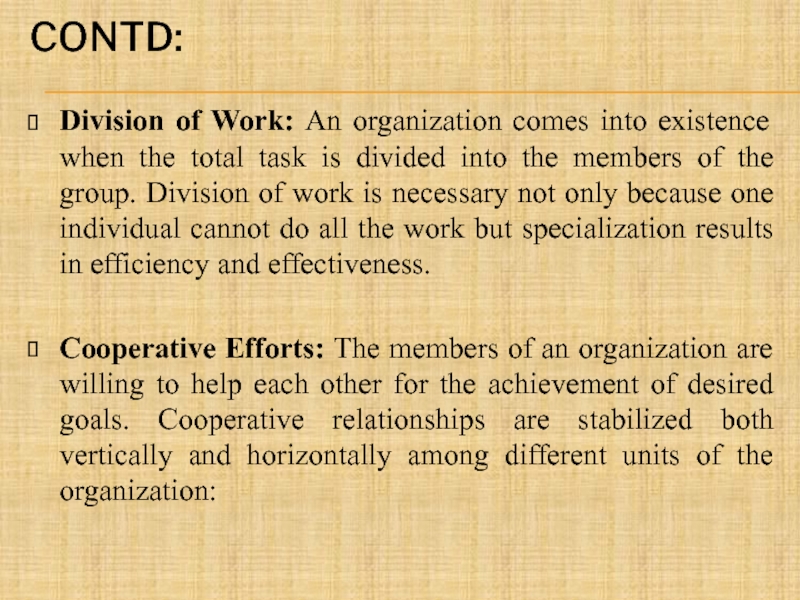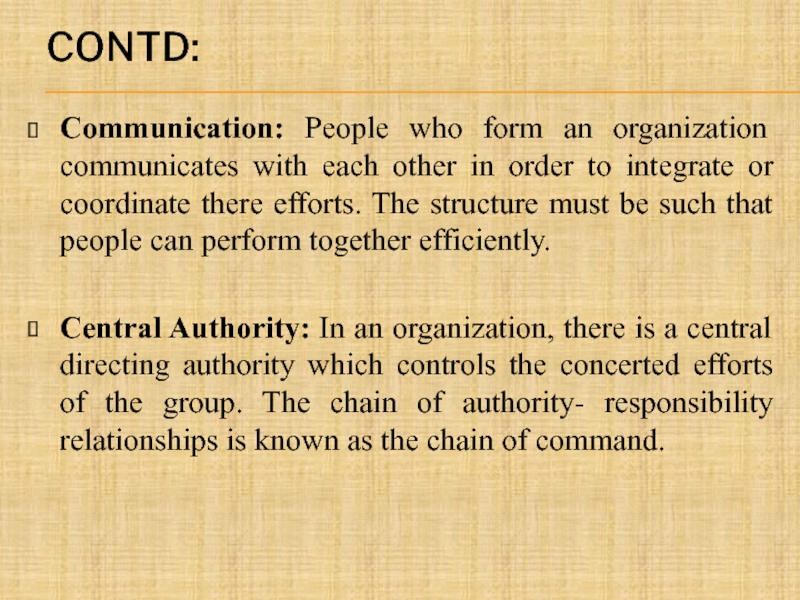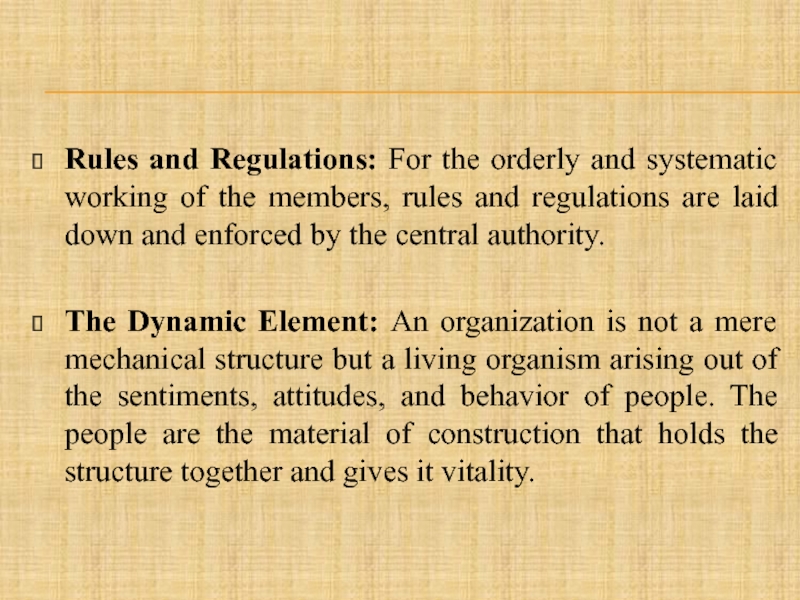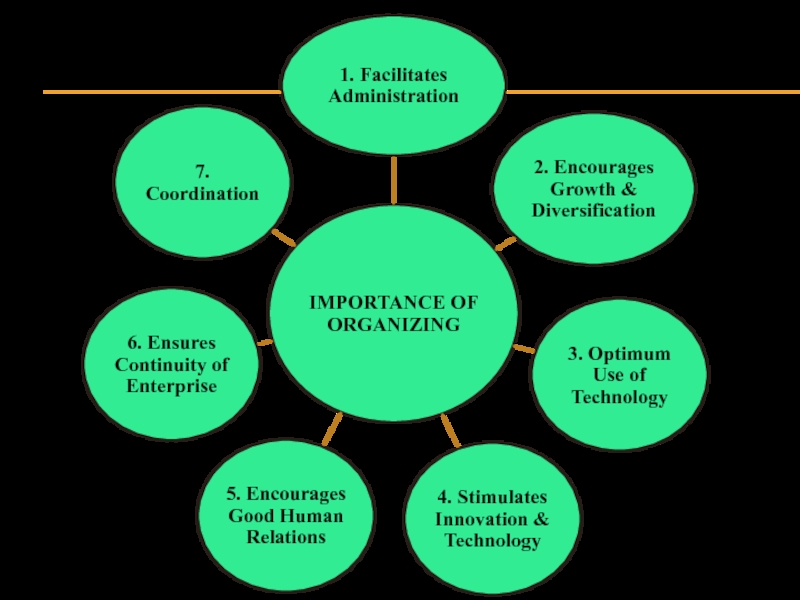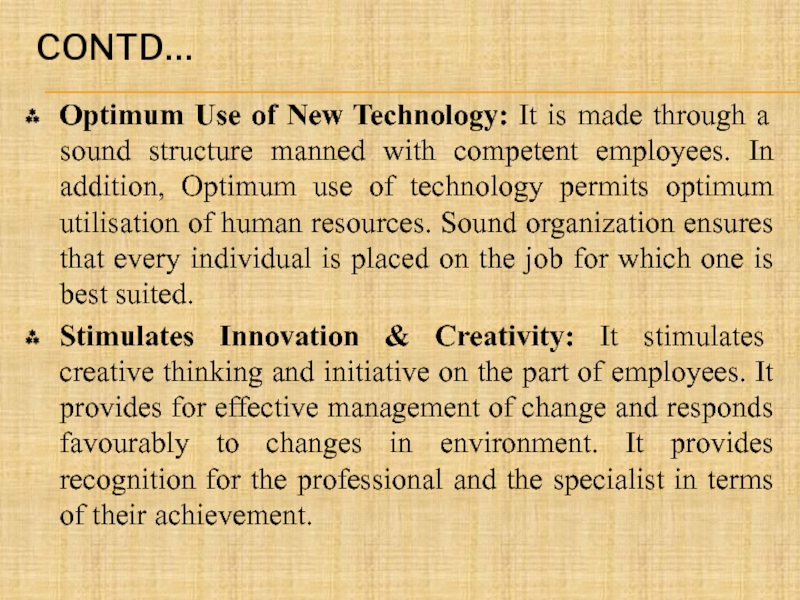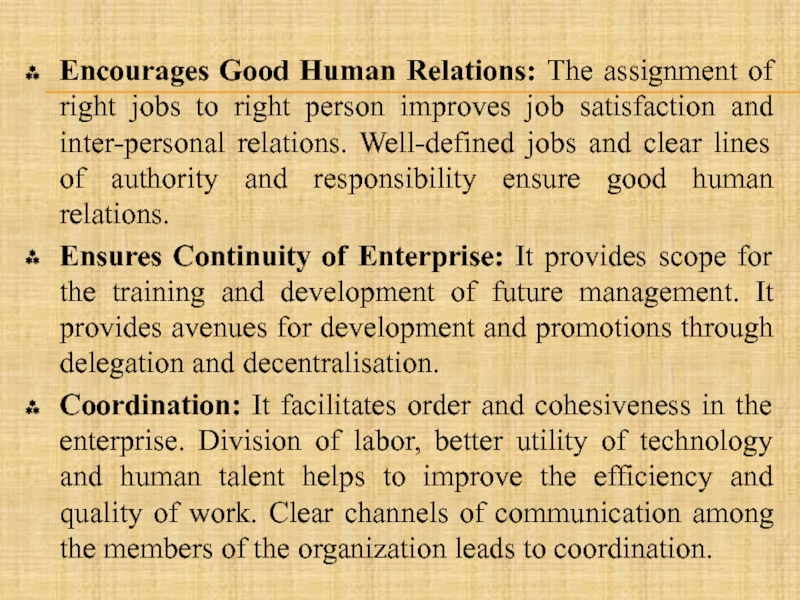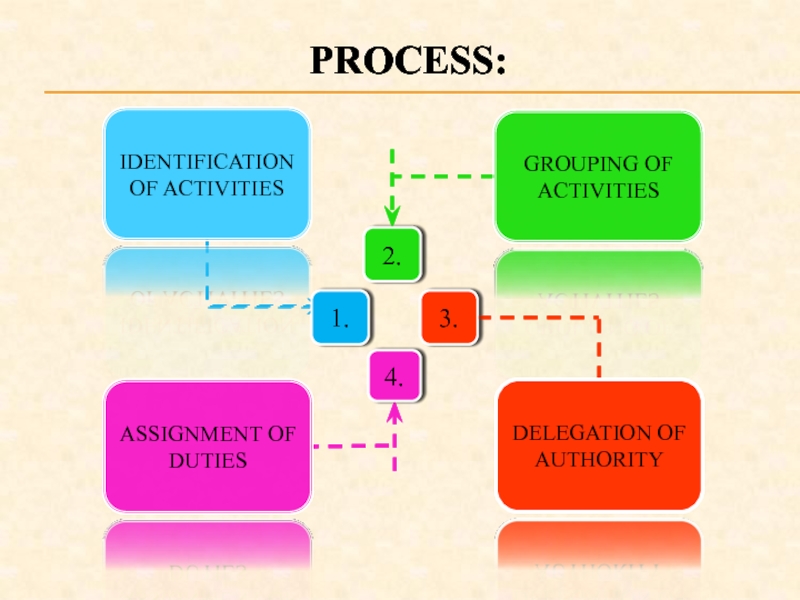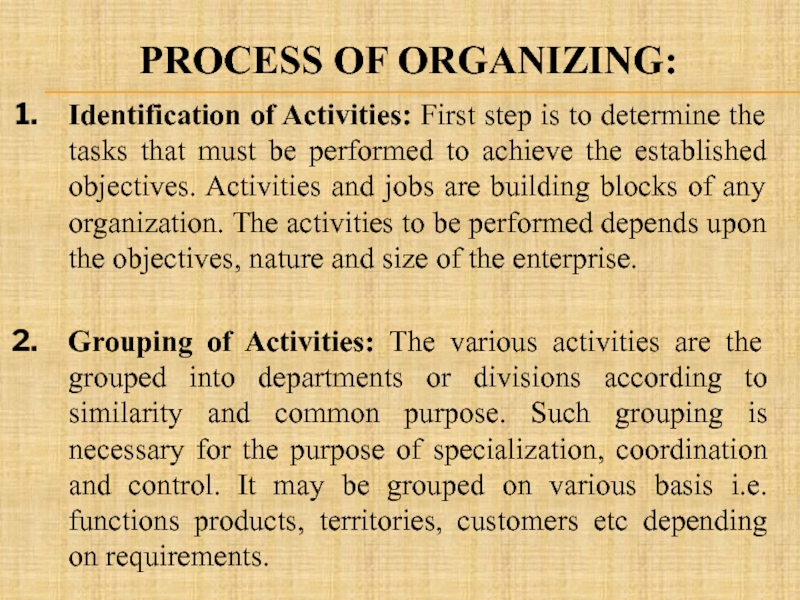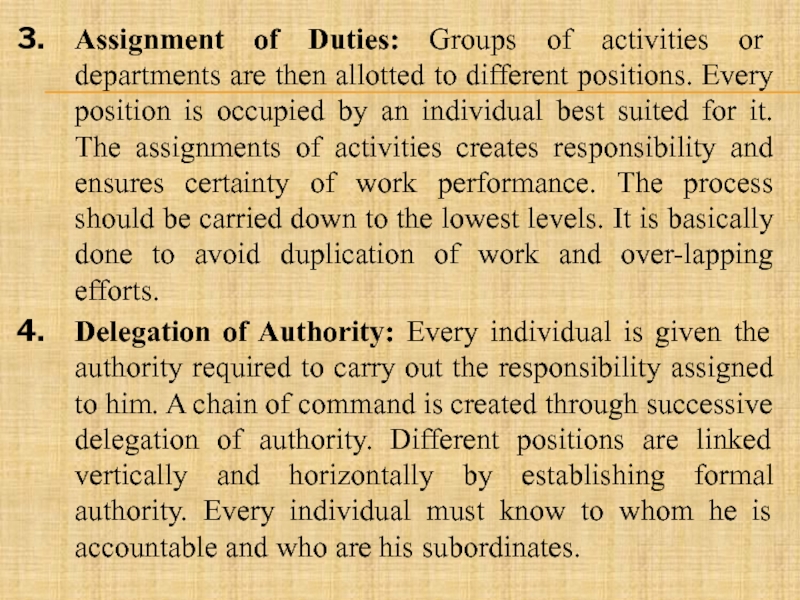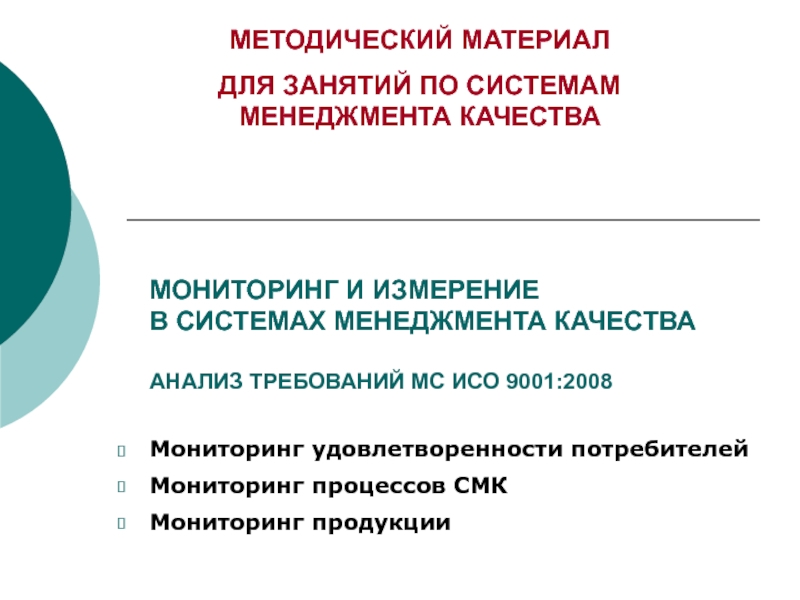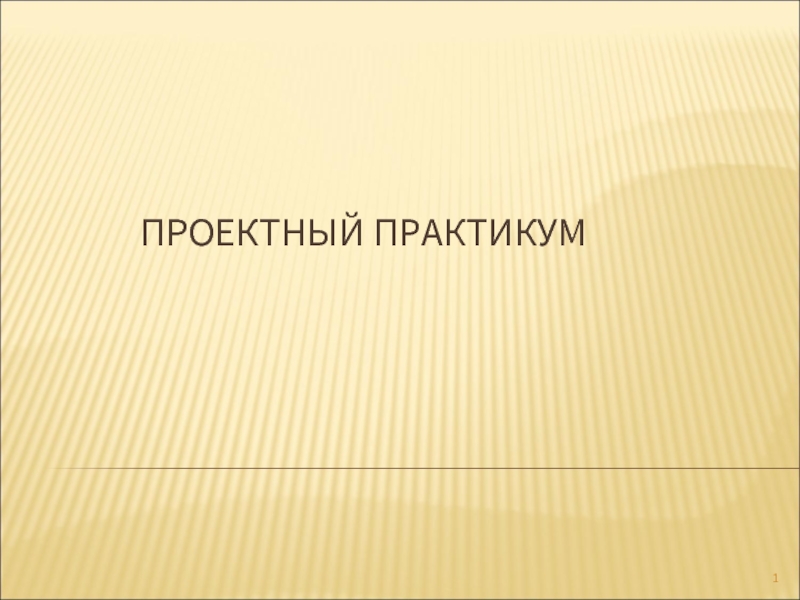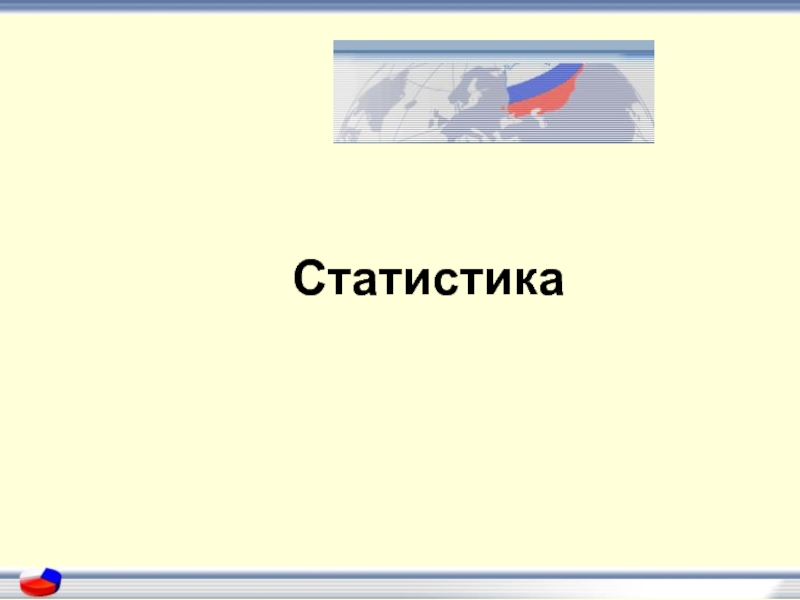- Главная
- Разное
- Дизайн
- Бизнес и предпринимательство
- Аналитика
- Образование
- Развлечения
- Красота и здоровье
- Финансы
- Государство
- Путешествия
- Спорт
- Недвижимость
- Армия
- Графика
- Культурология
- Еда и кулинария
- Лингвистика
- Английский язык
- Астрономия
- Алгебра
- Биология
- География
- Детские презентации
- Информатика
- История
- Литература
- Маркетинг
- Математика
- Медицина
- Менеджмент
- Музыка
- МХК
- Немецкий язык
- ОБЖ
- Обществознание
- Окружающий мир
- Педагогика
- Русский язык
- Технология
- Физика
- Философия
- Химия
- Шаблоны, картинки для презентаций
- Экология
- Экономика
- Юриспруденция
Organizing. Fundamental concept of organizing презентация
Содержание
- 1. Organizing. Fundamental concept of organizing
- 2. WHAT IS ORGANIZING? "Organization is the process
- 3. FUNDAMENTAL CONCEPT OF ORGANIZING: DIFFERENTIATION: It means
- 4. NATURE OF ORGANIZING: Communication Central Authority Rules
- 5. NATURE OF ORGANIZATION: Group of Persons: An
- 6. CONTD: Division of Work: An organization comes
- 7. CONTD: Communication: People who form an organization
- 8. Rules and Regulations: For the orderly
- 10. IMPORTANCE OF ORGANIZING: Facilitates Administration: Achievement of
- 11. CONTD… Optimum Use of New Technology: It
- 12. Encourages Good Human Relations: The assignment of
- 13. PROCESS: 1. 2. 3. 4. IDENTIFICATION OF
- 14. PROCESS OF ORGANIZING: Identification of Activities: First
- 15. Assignment of Duties: Groups of activities or
Слайд 2WHAT IS ORGANIZING?
"Organization is the process of identifying and grouping of
the works to be performed, defining and delegating responsibility and authority and establishing relationships for the purpose of enabling people to work most efficiently".
- Louis A. Allen
- Louis A. Allen
Слайд 3FUNDAMENTAL CONCEPT OF ORGANIZING:
DIFFERENTIATION: It means that an organization is composed
of units that work on specialized tasks using different work methods and requiring employees with unique competencies.
INTEGRATION: It means that the various units must be put back together so that work is coordinated.
INTEGRATION: It means that the various units must be put back together so that work is coordinated.
Слайд 4NATURE OF ORGANIZING:
Communication
Central Authority
Rules & Regulations
Dynamic Element
Group of Persons
Common Objectives
Division of
Work
Cooperative Efforts
Cooperative Efforts
Слайд 5NATURE OF ORGANIZATION:
Group of Persons: An organization is a group of
people working together for the achievement of common objectives. The group may be large or small. An organization is a system of cooperative relationships of two or more persons.
Common Objectives: Every organization has a common objectives distinct from personal objectives of the members. The common goal is the basis of cooperation among the members. The objectives of the organization are usually are made explicit
Common Objectives: Every organization has a common objectives distinct from personal objectives of the members. The common goal is the basis of cooperation among the members. The objectives of the organization are usually are made explicit
Слайд 6CONTD:
Division of Work: An organization comes into existence when the total
task is divided into the members of the group. Division of work is necessary not only because one individual cannot do all the work but specialization results in efficiency and effectiveness.
Cooperative Efforts: The members of an organization are willing to help each other for the achievement of desired goals. Cooperative relationships are stabilized both vertically and horizontally among different units of the organization:
Cooperative Efforts: The members of an organization are willing to help each other for the achievement of desired goals. Cooperative relationships are stabilized both vertically and horizontally among different units of the organization:
Слайд 7CONTD:
Communication: People who form an organization communicates with each other in
order to integrate or coordinate there efforts. The structure must be such that people can perform together efficiently.
Central Authority: In an organization, there is a central directing authority which controls the concerted efforts of the group. The chain of authority- responsibility relationships is known as the chain of command.
Central Authority: In an organization, there is a central directing authority which controls the concerted efforts of the group. The chain of authority- responsibility relationships is known as the chain of command.
Слайд 8
Rules and Regulations: For the orderly and systematic working of the
members, rules and regulations are laid down and enforced by the central authority.
The Dynamic Element: An organization is not a mere mechanical structure but a living organism arising out of the sentiments, attitudes, and behavior of people. The people are the material of construction that holds the structure together and gives it vitality.
The Dynamic Element: An organization is not a mere mechanical structure but a living organism arising out of the sentiments, attitudes, and behavior of people. The people are the material of construction that holds the structure together and gives it vitality.
Слайд 10IMPORTANCE OF ORGANIZING:
Facilitates Administration: Achievement of the objectives of an enterprise
by providing a framework of coordination and control. It provides a system of authority and network for effective communication. Individual goals can be coordinated towards group goals. A properly balanced organization facilitated both management and operation of the enterprise.
Encourages Growth & Diversification: It has enabled organizations to grow and expand to giant sizes. Systematic division of work and consistent delegation of authority facilitate taking up of new activities and meeting new demands. It provides flexibility for growth without losing control over various activities.
Encourages Growth & Diversification: It has enabled organizations to grow and expand to giant sizes. Systematic division of work and consistent delegation of authority facilitate taking up of new activities and meeting new demands. It provides flexibility for growth without losing control over various activities.
Слайд 11CONTD…
Optimum Use of New Technology: It is made through a sound
structure manned with competent employees. In addition, Optimum use of technology permits optimum utilisation of human resources. Sound organization ensures that every individual is placed on the job for which one is best suited.
Stimulates Innovation & Creativity: It stimulates creative thinking and initiative on the part of employees. It provides for effective management of change and responds favourably to changes in environment. It provides recognition for the professional and the specialist in terms of their achievement.
Stimulates Innovation & Creativity: It stimulates creative thinking and initiative on the part of employees. It provides for effective management of change and responds favourably to changes in environment. It provides recognition for the professional and the specialist in terms of their achievement.
Слайд 12Encourages Good Human Relations: The assignment of right jobs to right
person improves job satisfaction and inter-personal relations. Well-defined jobs and clear lines of authority and responsibility ensure good human relations.
Ensures Continuity of Enterprise: It provides scope for the training and development of future management. It provides avenues for development and promotions through delegation and decentralisation.
Coordination: It facilitates order and cohesiveness in the enterprise. Division of labor, better utility of technology and human talent helps to improve the efficiency and quality of work. Clear channels of communication among the members of the organization leads to coordination.
Ensures Continuity of Enterprise: It provides scope for the training and development of future management. It provides avenues for development and promotions through delegation and decentralisation.
Coordination: It facilitates order and cohesiveness in the enterprise. Division of labor, better utility of technology and human talent helps to improve the efficiency and quality of work. Clear channels of communication among the members of the organization leads to coordination.
Слайд 13PROCESS:
1.
2.
3.
4.
IDENTIFICATION OF ACTIVITIES
GROUPING OF ACTIVITIES
ASSIGNMENT OF DUTIES
DELEGATION OF AUTHORITY
Слайд 14PROCESS OF ORGANIZING:
Identification of Activities: First step is to determine the
tasks that must be performed to achieve the established objectives. Activities and jobs are building blocks of any organization. The activities to be performed depends upon the objectives, nature and size of the enterprise.
Grouping of Activities: The various activities are the grouped into departments or divisions according to similarity and common purpose. Such grouping is necessary for the purpose of specialization, coordination and control. It may be grouped on various basis i.e. functions products, territories, customers etc depending on requirements.
Grouping of Activities: The various activities are the grouped into departments or divisions according to similarity and common purpose. Such grouping is necessary for the purpose of specialization, coordination and control. It may be grouped on various basis i.e. functions products, territories, customers etc depending on requirements.
Слайд 15Assignment of Duties: Groups of activities or departments are then allotted
to different positions. Every position is occupied by an individual best suited for it. The assignments of activities creates responsibility and ensures certainty of work performance. The process should be carried down to the lowest levels. It is basically done to avoid duplication of work and over-lapping efforts.
Delegation of Authority: Every individual is given the authority required to carry out the responsibility assigned to him. A chain of command is created through successive delegation of authority. Different positions are linked vertically and horizontally by establishing formal authority. Every individual must know to whom he is accountable and who are his subordinates.
Delegation of Authority: Every individual is given the authority required to carry out the responsibility assigned to him. A chain of command is created through successive delegation of authority. Different positions are linked vertically and horizontally by establishing formal authority. Every individual must know to whom he is accountable and who are his subordinates.

